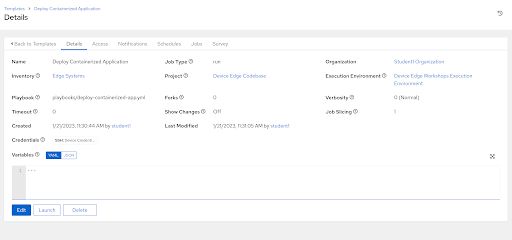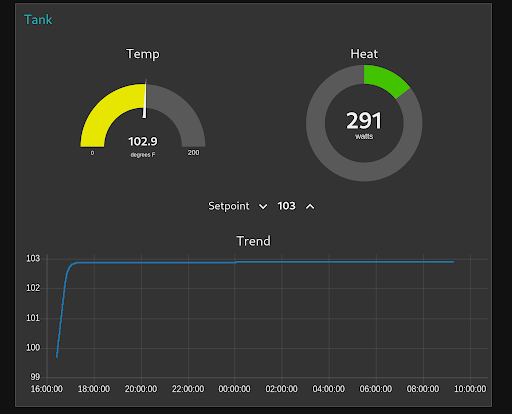Workshop Exercise 5.4 - Deploy Containerized Application
Table of Contents
- Objective
- Step 1 - Creating a Playbook
- Step 2 - Creating a Job Tempate
- Step 3 - Running the Job Template
- Solutions
Objective
In this exercise, we’ll create a playbook to run our role, create a job template for it in Ansible Controller, and deploying the application – all via automation.
Step 1 - Creating a Playbook
Return to your code repo and create a playbook in the playbooks directory called deploy-containerized-app.yml with the following contents:
---
- name: deploy our containerized application
hosts: all
roles:
- ../roles/deploy_containerized_app
Once complete, be sure to commit push your changes up to the git server.
Step 2 - Creating a Job Template
Note
Be sure to sync your project in Controller before attempting to create this job template.
In the Controller WebUI. under Resources > Templates, select Add > Add job template and enter the following information:
| Parameter | Value |
|---|---|
| Name | Deploy Containerized Application |
| Inventory | Edge Systems |
| Project | Device Edge Codebase |
| Execution Environment | Device Edge Workshops Execution Environment |
| Playbook | playbooks/deploy-containerized-app.yml |
| Credentials | |
| Limit |
Remember to click Save.
Step 3 - Running the Job Template
Now that the job template has been created, click the Launch button if you are still within the Deploy Containerized Application Job Template. Otherwise, click on the rocket ship on the Templates page to launch the job template. Enter your device name when prompted on the limits page. Monitor the output for any errors or issues. However, hopefully the job executes successfully.
As a reminder, the output of jobs can be reviewed on the Jobs tab.
Once the playbook completes, visit http://$(your-device-ip-address):1881/ui to view the running application.
Note
For virtualized edge devices, you’ll need to use SSH tunneling or just curl the port to check for a response.
Similar to the bare metal deployment of the application, the automation could be added to the end of our provisioning workflow as soon as a device calls home.
Solutions


Navigation
| Previous Exercise | Next Exercise |
